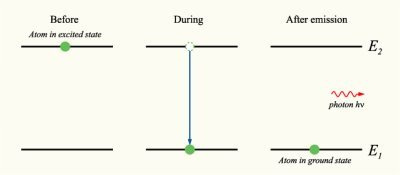Electroluminescence is a characteristic of some materials, usually semiconductors, which emit light when exposed to a certain current or a sufficiently strong electric field. This technology is not a recent discovery; for example, in 1960 Chrysler was already incorporating electroluminescent panels in its vehicles. One of its main characteristics is the type of light it emits, very similar to that of neon lights.
How does electroluminescence work?
From a physical point of view, the process behind this phenomenon is based on a radioactive recombination known as spontaneous emission. Through this process, a quantum system, such as an atom or a molecule, passes from a high energy state to a lower energy state and emits a quantum of energy in the form of a photon. A photon is the particle that carries electromagnetic radiation, such as visible light or radio waves, has a mass equal to zero and, in a vacuum, travels at the speed of light.

A more prosaic description to define electroluminescence could be the process by which a phosphorescent material, when electricity is applied to it, emits light. It is important to note that when we speak of phosphorous or phosphorescent materials we are not referring to the fact that they contain the chemical element phosphorus, but rather to their ability to produce light.
Applications of electroluminescence
Electroluminescence has countless applications. It is mainly used in automobile dashboards, small LCD panels and signage. Given the characteristics of electroluminescent materials, they can take any shape: strips, wires or geometric shapes so thin that they are almost two-dimensional. That is why, little by little, we are seeing them being incorporated into toys, jewelry or fashion accessories.

Advantages of electroluminescence
Among its major advantages are that it requires very little current to operate, has a very high durability, emits light omnidirectionally and can operate in a wide range of temperatures from -60ºC to 90ºC.
On the other hand, their light emission is low, as is their efficiency, and they usually require high voltages.
As you can see, electroluminescence is a physical phenomenon that is present in a multitude of everyday devices and, as time goes by, allows the development of increasingly sophisticated applications.

